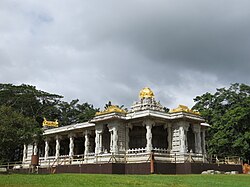Shaivism

Shaivism is a form of Hinduism, which sees Shiva as the most important deity. In practice, there are different branches of Shaivism. Shaivism is common in India, Nepal and Sri Lanka. It can also be found in Malaysia, Singapore, and Indonesia. Shaivism are routed from southern part of India, mainly from present day Tamil Nadu, The oldest shiva temples in the state are living proof for that..Major Kings ruled Southern India also considered Lord Siva as their God
Shaivism Media
The "Pashupati" seal from the Indus Valley civilisation.
Kushan coin of Vima Kadphises (2nd century CE), with a possible Shiva, holding a trident, in ithyphallic state[note 1] and next to a bull, his mount, as in Shaivism. The deity was described by the later Kushans in their coinage as "Oesho", a possibly kushan deity.
Shiva with Trisula, worshipped in Central Asia. Penjikent, Uzbekistan, 7th–8th century CE. Hermitage Museum.
The 7th to 8th-century Shore Temple at Mahabalipuram is a UNESCO World Heritage site. It features thousands of Shaivism-related sculptures.
An image collage of 1st millennium CE Shaivism icons and temples from Southeast Asia (top left): Shiva in yoga pose, Nandi, Prambanan temple, Yoni-Linga and Hindu temple layout.
Kauai Hindu monastery in Kauai Island in Hawaii is the only Hindu Monastery(shaivaite) in the United States.
Cite error: There are <ref> tags on this page, but the references will not show without a {{Reflist|group=note}} template or a <references group="note"/> tag.








